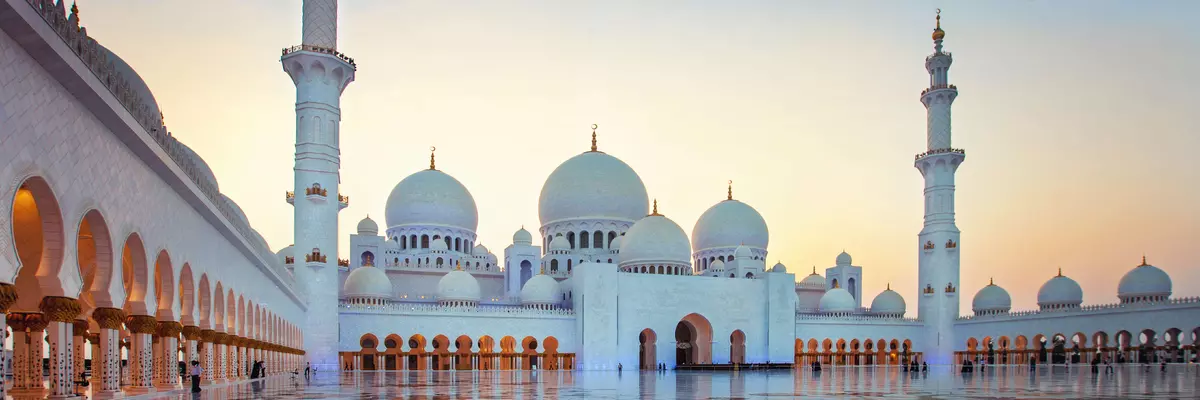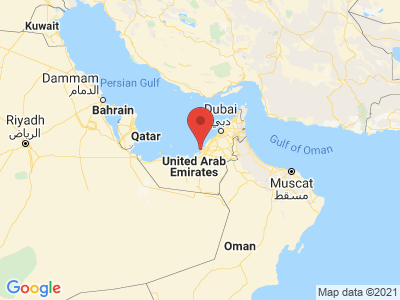Climate Table Abu Dhabi
Jan | Feb | Mar | Apr | May | Jun | Jul | Aug | Sep | Oct | Nov | Dec | |
|---|---|---|---|---|---|---|---|---|---|---|---|---|
| Max. Temperature | 24° | 25° | 28° | 33° | 38° | 39° | 40° | 40° | 39° | 35° | 30° | 26° |
| Min. Temperature | 14° | 15° | 17° | 21° | 25° | 27° | 29° | 29° | 27° | 23° | 19° | 16° |
| Sun Hours | 8 | 8 | 8 | 9 | 11 | 11 | 10 | 10 | 10 | 10 | 10 | 8 |
| Water Temperature | 22° | 21° | 23° | 25° | 27° | 30° | 31° | 32° | 32° | 30° | 27° | 25° |
| Rain Days | 1 | 2 | 3 | 1 | 0 | 0 | 0 | 0 | 0 | 0 | 0 | 1 |
The climate year of Abu Dhabi
The city is located on a 70 square kilometer island in the Persian Gulf in the mangrove belt. The island is connected to the mainland by a bridge and is surrounded by a ring of uplifted islands. Due to its location, the city is very hot, especially in the summer months, and humid all year round. The light wind provides some cooling. Precipitation is almost non-existent and comes down mainly in the Hajar Mountains located east of Abu Dhabi. Accordingly, the sky is blue throughout the year. The city has a high number of sunshine hours throughout the year for sun-loving people. For Europeans who do not like it quite so hot, the winter is particularly suitable as a travel time.
General information about Abu Dhabi
The capital of the United Arab Emirates Abu Dhabi impresses with an exciting mix of oriental traditions and western-oriented modernity and high-tech. Among the classic buildings worth seeing is the unique and snow-white Sheikh Zayeed Mosque. The desert landscape is sometimes interrupted by green oases, especially in the cities, and allows for pleasant relaxation. The people of the city and the country have an enormously warm hospitality. Arabic markets naturally also characterize the image of the oriental city and transport one into a dreamlike world from 1001 nights. At the same time, however, there are grandiose luxury hotels and buildings that make for a striking skyline. Huge shopping malls, amusement parks and golf courses offer variety to the turquoise water and the white beach.
Tourism Abu Dhabi
The winter of Abu Dhabi is between the months of December to March. The three months of March and April, and October and November are likely to be transition months to or from the hot season and are likely to mark spring and fall. The winter months are very pleasant by European standards with maximum temperatures around 25 degrees. In the summer months of May to September, however, maximum temperatures can easily rise above 40 degrees. Even at night, the thermometer cools only slightly below 30 degrees. During these hot months there is almost no rainfall. Also, the total number of rainy days for the city averages 7 days a year. Humidity is very high and is almost constant at 58 to 68% a year, with the months of April to July being the least humid. The water temperature averages 27.1 degrees a year and is above 30 degrees in the months of June to October.


